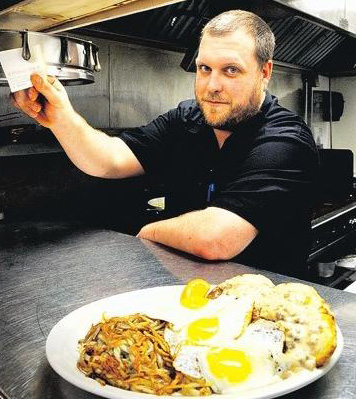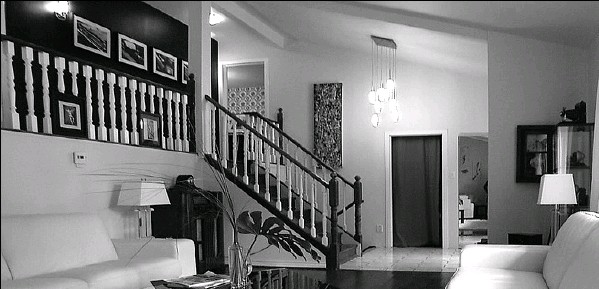Variable-rate-mortgage holders could face financial squeeze late next year
Derrick Penner
Sun
Homeowners are being warned any rise in interest rates later next year risks putting a financial squeeze on the large number of debt-laden Canadians who took out variable mortgages at rock-bottom rates.
This is a particular concern in Metro Vancouver, Canada’s most expensive housing market, where buyers have been drawn into the market in numbers large enough to drive prices back up to near their previous peaks following the recent market correction.
“Canadians are potentially leaving themselves wide open for significant financial obligations once interest rates begin to rise,” the Mortgage Brokers Association of B.C. said in a statement Wednesday.
The association estimates that some 40 per cent of homebuyers are taking on variable mortgages.
“There certainly has been more of a trend for people deciding to choose variable rates,” association president Joe Santos said in an interview.
And the mortgage association’s call was on top of a warning from Bank of Canada Governor Mark Carney that Canada “must be vigilant” in containing the threat rising rates would have on increasing the debt-servicing costs for Canadians who have taken on increasing levels of debt.
And Carney’s advice, delivered a week after he first voiced concern about the high levels of debt Canadians are carrying, followed the bold prediction of economist and author Jeff Rubin that the jump in rates could be as steep as three to four percentage points over the next two years as the Bank of Canada raises rates to keep inflation, caused by increasing energy costs, in check.
That increase could add up to $1,000 a month to the payment on a $400,000 mortgage, typical for Metro-Vancouver.
“Mortgage rates and debt loads aren’t particularly onerous at today’s interest rates,” Rubin told Reuters.
“Where the concern comes into the equation is that people strap on record debt levels at today’s unsustainably low interest rates to find out that, two years from now, [when rates have risen], that those housing purchases are no longer affordable.”
Rubin, former chief economist of CIBC World Markets and more recently author of the book Why Your World is About to Get a Whole Lot Smaller: Oil and the End of Globalization, predicts oil prices, already $71 a barrel, will rise to $90 a barrel by the end of the winter and $100 by the end of 2010, which will stoke inflation.
However, interest rates depend on whether or not inflation takes hold quickly, with many arguing that Canada’s still-weak economy shows few signs that it will.
Carol Frketich, regional economist for Canada Mortgage and Housing in B.C., said recent figures from Statistics Canada indicate Canada’s manufacturing sectors are running well below capacity. Unemployment, she added, also remains relatively high, which takes the pressure off employers to raise wages.
Both factors, Frketich said, are signs the economy has room to grow without sparking inflation.
In that environment, “the general outlook is for gradually rising [mortgage] rates, but when you look at where they’re at, they are just incredibly low, that’s no big surprise.”
Cameron Muir, chief economist for the B.C. Real Estate Association, noted that Bank of Canada governor Carney slashed the bank’s key overnight lending rate to a record low 0.25 per cent as a measure to encourage spending in the economy, and promised to keep it there until next June.
However, with the economy’s recovery proceeding slowly, Muir said “it might not be until the fourth quarter of 2010 by the time we see that target, trendsetting rate increase.”
Muir is forecasting mortgage rates might increase 1.30 percentage points on short-term mortgages and perhaps 0.75 of a percentage point on five-year rates by the start of 2011.
That modest increase in interest rates will still dampen sales as they combine with Metro Vancouver’s high prices, he added.
Muir said that Metro Vancouver’s home prices, which dropped as much as 15 per cent during the depth of B.C.’s recession, have recovered almost all of those losses.
Santos said his biggest concern from rising mortgage rates is with buyers who purchased homes in 2006 and 2007, when credit was a little more easily obtained and borrowers could get 100-per-cent mortgages, than he is for recent buyers who have taken out variable mortgages.
“I think [steep rate increases] would certainly create some issues for some consumers who were stretched when they initially qualified [for mortgages],” he said.
Recent buyers, Santos said, would have qualified under rules that call for an ability to pay a higher rate than the current variable rate and should have room in their budgets for bigger mortgage payments.
Santos added that good mortgage brokers will be advising clients on when it might be the best time to lock into a fixed-rate mortgage.
And Carney said consumers need to be ready to do that.
“When risks are still manageable is precisely the best time to act,” he said.
—
INTEREST RATE IMPACTS
Economist Jeff Rubin has made the bold prediction that rapidly rising energy prices will force the Bank of Canada to raise interest rates faster than expected, by as much as three to four-percentage-points, over the next two years putting the financial squeeze on homeowners holding variable-rate mortgages. Here is a comparison of what monthly payments would be on a typical mortgage today, and after interest rate increases.
© Copyright (c) The Vancouver Sun





